Dielectric properties are critical design parameters for electronics applications in aerospace, automotive, food and medical industries which need accurate measurements to incorporate the most suitable material into its intended application. Dielectric measurements determine the complex permittivity of materials where the real part of permittivity of a material is the degree to which it can store charge. The loss tangent characterises the dissipation of an electromagnetic wave propagating through the material as a result of dielectric loss mechanisms.
We have comprehensive facilities for measurement of the dielectric permittivity and loss of materials ranging from composites and ceramics to liquids and natural materials, between 1 kHz and 750 GHz. We can determine the most appropriate measurement technique for a particular sample based on the measurement frequency, the loss of the material and the texture. As an NMI, we can ensure traceability and intercompare our techniques.
'A guide to the characterisation of dielectric materials at RF and microwave frequencies' describes the interpretation of dielectric data, measurement techniques and good practice in dielectric metrology. This publication is jointly published by NPL and the Institute of Measurement and Control, please contact us to receive a copy via email.
NPL can also:
Measurements of loss by resonance at MHz frequencies Resonant systems at NPL enable the loss of very low-loss sheets of materials to be measured at MHz frequencies. These can be used for characterising RF windows made from alumina, and polymers used in the electronics industry. |  |
Measurement of capacitance and dissipation with admittance methods that use LCR meters Electronic test equipment used to measure the inductance (L), capacitance (C) and resistance (R) of an electronic component. Three-terminal cells are used to give best accuracy. Measurements are made typically at 1 MHz but are possible in the range 1 kHz to 10 MHz. We have a liquid cell, and a parallel plate cell for planar specimens at least 50 mm across. Measurements with the parallel plate cell are made by the Lynch method. | 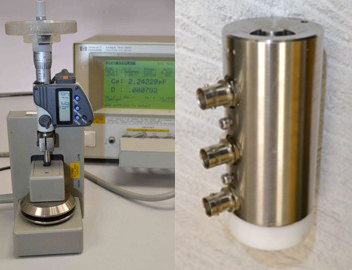 |
Quasioptic transmission systems We have compact quasioptic transmission systems (SwissTo12 Material Characterisation Kits) for the following bands: 50-75 GHz, 75-110 GHz, 140-220 GHz, 500-750 GHz. These are used for measuring the dielectric permittivity and loss of sheets of material. They can also be used to measure powders. For other facilities for measurement at THz frequencies, see Terahertz radiation. | 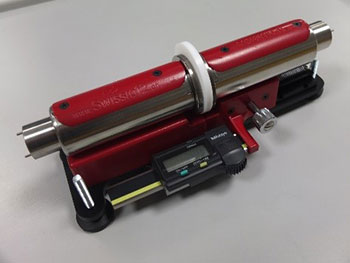 |
Measurement on high-loss liquids and malleable solid materials in the frequency range 50 MHz to 50 GHz. Open-ended coaxial probes in various sizes are typically used for measuring tissue-equivalent phantoms used in SAR (Specific Absorption Rate) measurement, foodstuffs, and biomedical materials. | 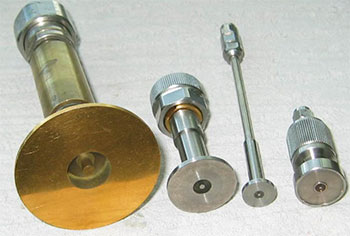 |
Millimetre-wave open resonators For precise measurement on low-loss materials ( loss tangent < 0.003) using. Systems are available for 36 GHz, 72 GHz, 94 GHz and 144 GHz. A system for 8 GHz to 12 GHz is also available. | 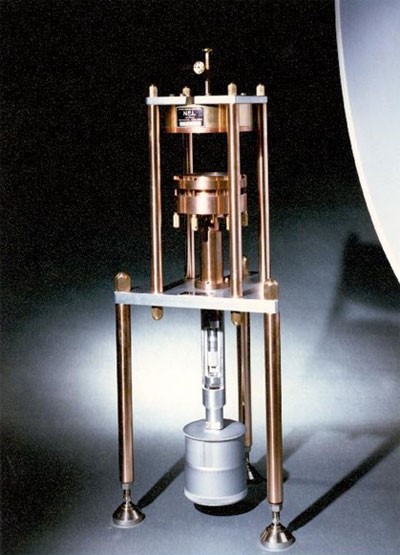 |
Measurement of laminar materials At 1.8 GHz, 2.45 GHz, 4 GHz, 8.2 GHz, 10 GHz and 14 GHz by using a selection of split-post dielectric resonators. Dielectric coatings can also be measured. | 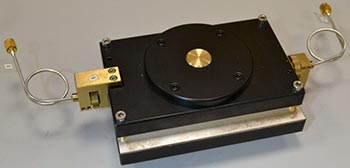 |
Coaxial line and waveguide transmission line measurements from 100 MHz to 18 GHz for medium to high-loss dielectrics. Coaxial cells based on 7 mm and 14 mm coaxial line are available. For waveguide measurement, spacers for several sizes (including X-band) are also available. For magnetic materials (such as ferrite RAM and ferroelectric composites), permittivity and permeability can be determined. | 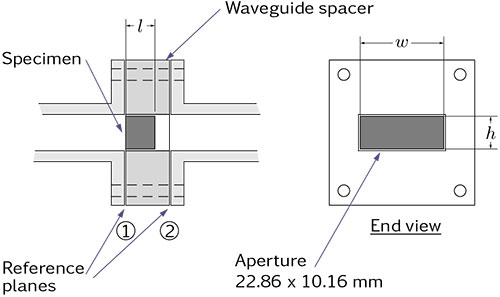 |
NPL can also:
Examples of recent work include:
We carry out measurements on:
Don’t see what you are looking for? Our diverse skill set enables us to provide bespoke solutions. Please contact us to discuss your requirements.
Our research and measurement solutions support innovation and product development. We work with companies to deliver business advantage and commercial success.
Contact our Customer Services team on +44 20 8943 7070